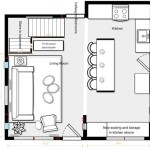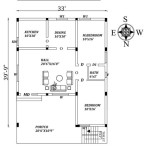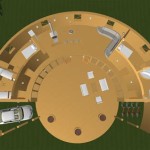Bunker House Plans: Designing for Security and Resilience
Bunker house plans represent a growing niche in residential architecture, driven by increasing concerns about security, privacy, and disaster preparedness. These structures are designed to provide a hardened shelter against a variety of threats, ranging from severe weather events to social unrest. While the concept of underground or fortified housing may evoke images of spartan, utilitarian spaces, modern bunker house plans often incorporate comfortable and aesthetically pleasing designs.
A key consideration in bunker house plans is the level of protection desired. This dictates the materials used, the construction techniques employed, and the overall design of the structure. Basic bunker designs might involve reinforced concrete walls and roofs, blast-resistant doors and windows, and backup power systems. More advanced designs can include air filtration systems to protect against chemical or biological threats, self-contained water supplies, and sophisticated security systems.
The location of the bunker is another critical factor. Underground bunkers offer the highest level of protection, shielding occupants from extreme temperatures, radiation, and physical attacks. Above-ground bunkers, while less impervious, can be more easily integrated into existing landscapes and offer greater flexibility in design and layout. Some designs incorporate both above-ground and below-ground elements, providing a balance of security and livability.
Accessibility and egress are paramount in bunker design. Multiple escape routes are essential in case the primary exit is blocked. These may include hidden tunnels, emergency hatches, or secondary exits leading to different parts of the property. The design should also consider the needs of all occupants, ensuring accessibility for individuals with disabilities.
Ventilation and air quality are critical for long-term occupancy in a bunker. Sealed environments require robust ventilation systems capable of filtering out contaminants and maintaining a comfortable temperature and humidity level. Air filtration systems may include HEPA filters, activated carbon filters, and other technologies designed to remove particulate matter, chemical agents, and biological threats.
Water supply and sanitation are also crucial considerations. Bunker designs often incorporate water storage tanks and filtration systems to provide a reliable source of potable water. Waste management systems may include composting toilets, septic systems, or other off-grid solutions. Careful planning is necessary to ensure the long-term sustainability of these systems.
Power generation is essential for maintaining essential systems within the bunker. Backup power systems may include generators, solar panels, wind turbines, or a combination of these technologies. The chosen power source should be reliable, efficient, and capable of meeting the anticipated energy demands of the bunker.
Communication systems are crucial for staying informed about external events and maintaining contact with the outside world. Bunker designs may incorporate satellite phones, radio communication systems, and internet access via satellite or other means. These systems should be robust and resistant to disruptions.
Security systems play a vital role in protecting the bunker and its occupants. These may include surveillance cameras, motion detectors, intrusion alarms, and reinforced perimeter fencing. The security system should be designed to provide early warning of potential threats and deter unauthorized access.
Psychological considerations are often overlooked in bunker design. Living in a confined space for extended periods can be stressful, and the design should incorporate features that promote mental well-being. Natural light, comfortable living spaces, and access to recreational activities can help mitigate the psychological impact of bunker living.
Cost is a significant factor in bunker construction. The price of a bunker can vary widely depending on the size, complexity, and level of protection desired. Basic bunker designs may be relatively affordable, while more elaborate and sophisticated structures can be quite expensive. Careful budgeting and planning are essential to ensure the project remains within the allocated budget.
Legal and regulatory considerations vary depending on the location and specific design of the bunker. Building permits and other approvals may be required, and it is important to comply with all applicable regulations. Consulting with local authorities and experienced professionals is essential to navigate the legal and regulatory landscape.
Maintenance and upkeep are essential for ensuring the long-term functionality and effectiveness of the bunker. Regular inspections, testing of systems, and preventative maintenance are necessary to identify and address potential problems before they escalate. A comprehensive maintenance plan should be developed and implemented to ensure the bunker remains operational and ready for use when needed.
The design and construction of a bunker house require careful planning, specialized expertise, and a significant investment. By addressing the key considerations outlined above, individuals and families can create a secure and resilient living space capable of providing protection and peace of mind in uncertain times.

And Floor Plans

Floorplans Walkthrough Of Luxury Underground Shelters Core77

Bunker House Nha Dan Architects Archdaily

An Underground House Alaska Science Forum Homes Earth Sheltered

Pin On Underground Bunkers Shelters Fallout Construction Security

Floorplans Walkthrough Of Luxury Underground Shelters Core77

Underground Bunker Plans House

Luxury Bunker Design

Cartoon Earth Png 4000 3190 Free Transpa House Plan Cleanpng Kisspng

Amazing Doomsday Bunkers Of The Super Rich








